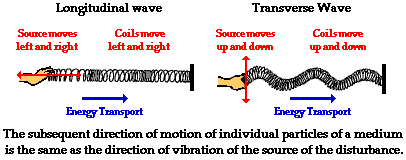Question #ebdfd
2 Answers
Amplitude.
And since amplitude squared is directly proportional to Intensity(
Loundness in sound waves is directly related to intensity.
Sound waves are different than light waves. Sound is a longitudinal wave, meaning that the energy transferred is perpendicular the directional motion of the wave. Here is a comparison picture:

Also, sound, like all longitudinal waves, need a medium to travel. In sound's case, it is air (usually). As the wave travels through air, the amount of energy that impacts an area is called "Intensity". This is related to "amplitude" in wave characteristics, but since sound travels in a medium, there is an amount of medium that impacts an area (i.e. eardrum) with a certain amount of energy. Likewise, since sound waves travel through a medium, distance and time affect the wave's ability to travel and energy output. So intensity diminishes over time and distance, therefore decreasing the intensity.
To summarize, amplitude of sound is also known as intensity, which is the amount of energy in a given area. To put this in math speak, it is: Intensity= Power/ area of I= Watt /
Source: **http://www.physicsclassroom.com/class/sound/Lesson-2/Intensity-and-the-Decibel-Scale**


